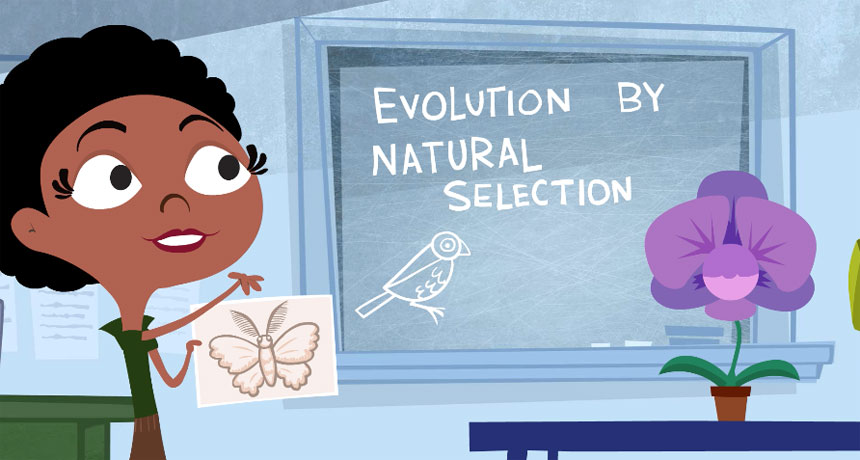‘Good Thinking’ series helps teachers fight learning myths
Free YouTube series for teachers busts old classroom legends

Myths abound in science education. A new video series hopes to clear the view.
“Good Thinking”/Smithsonian Science Education Center and FableVision Studios
Did you know that the phrase “survival of the fittest” can be misleading? Or that tailoring lessons to a student’s preferred learning style doesn’t actually help them understand concepts better? There are many myths about how students learn, and even more about certain scientific concepts. A new free video resource kicks out these old legends and educates teachers with research-based instruction methods.
“Good Thinking” is an animated series produced by the Smithsonian Science Education Center and FableVision Studios. The seven- to 10-minute cartoons follow a science teacher, Ms. Reyes, as she confronts topics such as the difference between mass and weight and where, exactly, the water cycle takes place. About two-thirds of the videos address science content misconceptions like these. The remaining third address science education myths such as learning styles and what motivates students.
SMASHING MYTHS The “Good Thinking” series smashes legends from kids’ learning styles to how natural selection really works. “Good Thinking”/Smithsonian Science Education Center and FableVision Studios |
The idea for the series came from a professional development project funded by the Department of Education. The Smithsonian Science Education Center ran a summer course for elementary school teachers in rural North Carolina to help them teach scientific concepts. “One of the things we learned is a lot of teachers haven’t been introduced to conceptual change or [science education] misconceptions,” says Marjee Chmiel, the associate director of curriculum at SEEC. “They didn’t know the research that had been done on the topic.”
It doesn’t help that many teachers come in to, say, teach second grade, but find themselves moved to fifth before landing at third. What needs to be taught varies wildly from grade to grade. Most elementary school teachers also “are taught to be very generalist,” says Jean Flanagan, SEEC’s science education research specialist. So the SEEC decided that just one summer course on how to teach science wasn’t enough. They set out to make a video series that exposes teachers to the latest thinking in science education research and helps combat lingering myths in science education.
The series began in June, and new videos will be released every two weeks through the fall for a total of around 15 episodes. They are targeted to elementary school teachers, but middle school teachers and interested parents could also learn a lot about science myths and how to teach science more effectively.
The information in the videos is helpful for clarifying some of the myths that get passed down in teaching materials — such as saying that plants make their own “food” or that water cycles require large lakes or oceans. Explanations are clear and the animations help illuminate difficult concepts. But sometimes the videos seem to forget they are aimed at elementary school teachers — not their students. Teachers will undoubtedly appreciate the information, but may find it hard to take seriously a talking wad of pre-chewed gum and jokes that would make a fourth grader roll their eyes.
“Our vision for it was that it wouldn’t just be a bland translation of journal articles,” Flanagan explains. “[We] worked with creative people to create a world and a story. With Gummerson [the talking wad of gum], he’s been sticking around the school, he observed the changes that come in and out of the school. He becomes the expert on students’ mental models.”
It’s good that the videos aren’t boring lectures. But I can’t help wondering if teachers might be a little turned off by meditating orchids and globes with bad British accents. Nevertheless, the character of Ms. Reyes is well thought out, and the information is excellent. If you want to find out why learning styles are out of fashion and why energy is such a tough subject, the videos are worth checking out.
“Good Thinking” is produced by the Smithsonian Science Education Center and FableVision Studios, and has recently formed a partnership with PBS LearningMedia. The videos are free of charge.
Follow Eureka! Lab on Twitter